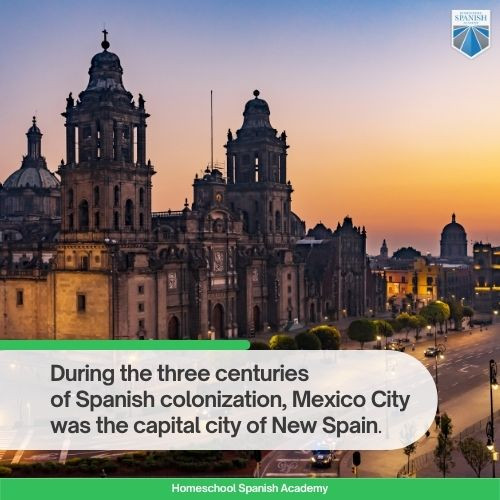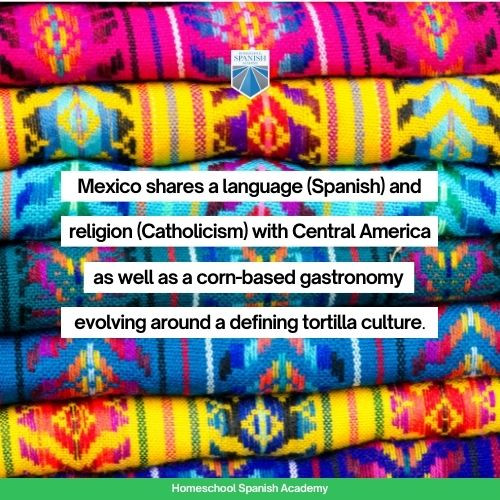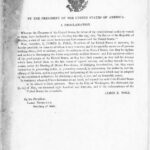Is Mexico Central America, or is it part of North America? This is a question often asked, and the answer is more nuanced than a simple yes or no. At gaymexico.net, we understand the importance of exploring Mexico’s diverse identity, especially for LGBTQ+ travelers seeking welcoming destinations. This article will delve into Mexico’s unique position, blending geographical facts with cultural insights to offer clarity and guidance for your next adventure, ensuring you’re well-informed about Mexican culture, gay travel destinations, and LGBTQ+ experiences.
1. What Defines a Continent? Exploring Mexico’s Place in the Americas
A continent is one of Earth’s seven main divisions of landmass. These seven are Africa, Antarctica, Asia, Australia, Europe, North America, and South America. According to National Geographic, a continent is defined as “one of Earth’s seven main divisions of land.” When discussing the Western Hemisphere, it’s crucial to keep this definition in mind to understand where Mexico stands geographically and culturally.
 The seven main divisions of land are Africa, Antarctica, Asia, Australia, Europe, North America, and South America
The seven main divisions of land are Africa, Antarctica, Asia, Australia, Europe, North America, and South America
1.1. What Constitutes North America?
North America, the third-largest continent, extends from Alaska and Greenland to the Isthmus of Panama. According to the Britannica Encyclopedia, North America is the third largest continent in the world, stretching from Alaska and Greenland in the north to the Isthmus of Panama in the south. This encompasses countries like Canada, the United States, Mexico, and parts of Central America. However, some geographers argue that the continent ends at the Isthmus of Tehuantepec in southern Mexico.
1.2. Where Does South America Begin?
South America, the fourth-largest continent, stretches from Colombia to Cape Horn in Chile. The Britannica Encyclopedia states that South America extends from Colombia in the North to Cape Horn in the South in present-day Chile. It includes countries such as Argentina, Brazil, and Colombia. While French Guiana and the Falkland Islands are sometimes included, they are territories of France and the UK, respectively.
1.3. What Defines Central America?
Central America is not a continent but rather the southernmost region of North America, located between Mexico and South America. According to Britannica, Central America is the “southernmost region of North America, lying between Mexico and South America.” Central America includes Guatemala, Belize, Honduras, El Salvador, Nicaragua, Costa Rica, and Panama.
 The name Central America exists to designate the “southernmost region of North America, lying between Mexico and South America.”
The name Central America exists to designate the “southernmost region of North America, lying between Mexico and South America.”
1.4. What Distinguishes Latin America?
Latin America is a cultural region, not a continent, defined by language, religion, and history. Latin America includes countries once colonized by Spain and Portugal, where Spanish or Portuguese is spoken, according to spanish.academy. This includes countries such as Cuba and the Dominican Republic but excludes territories like Suriname and Guyana, where Dutch and English are spoken.
2. Is Mexico Geographically Part of Central America? A Matter of Perspective
Geographers disagree on Mexico’s exact placement, with some arguing that Central America extends to the Isthmus of Tehuantepec in southern Mexico. This means that at least the southern portion of Mexico could be considered part of Central America. This geographical ambiguity adds to Mexico’s complex identity.
3. How Does Culture Place Mexico? Shared History with Central America
Mexico and Central America share a deep historical connection, as Mexico City was once the capital of New Spain, which included Central America. During the three centuries of Spanish colonization, Mexico City was the capital city of New Spain. Post-independence, Mexico and Central America briefly united as one large country. They also share a rich Mayan heritage, suggesting a cultural connection extending to southern Mexico.
 During the three centuries of Spanish colonization, Mexico City was the capital city of New Spain
During the three centuries of Spanish colonization, Mexico City was the capital city of New Spain
3.1. What Cultural Elements Link Mexico to Central America?
Mexico shares language (Spanish), religion (Catholicism), and corn-based gastronomy (tortilla culture) with Central America. According to spanish.academy, Mexico shares a language (Spanish) and religion (Catholicism) with Central America, as well as a corn-based gastronomy evolving around a defining tortilla culture. These shared cultural elements create a strong bond between Mexico and Central America.
4. How Do Geopolitics and Economics Influence Mexico’s Identity? Leaning Towards North America
Mexico’s strong economic ties with the United States and Canada, through agreements like the USMCA, place it geopolitically in North America. Given the United States’ significant global economic influence and its position as Mexico’s largest trade partner, Mexico tends to align more with North America geopolitically and economically.
5. Mexico’s LGBTQ+ Scene: A Welcoming Destination for All
Mexico has a vibrant and welcoming LGBTQ+ scene, with many cities offering inclusive spaces and events. According to gaymexico.net, cities such as Puerto Vallarta, Mexico City, and Cancun are known for their LGBTQ+-friendly atmospheres. From lively nightclubs to cultural festivals, Mexico offers diverse experiences for LGBTQ+ travelers.
5.1. What Are Some Top LGBTQ+ Destinations in Mexico?
Puerto Vallarta, Mexico City, and Cancun stand out as premier LGBTQ+ destinations. Puerto Vallarta is renowned for its gay beaches and vibrant nightlife. Mexico City offers a rich cultural scene with numerous LGBTQ+ bars and events. Cancun provides a mix of relaxation and entertainment, with many resorts catering to LGBTQ+ travelers.
5.2. What Legal Protections Exist for LGBTQ+ Individuals in Mexico?
Mexico has made significant strides in LGBTQ+ rights, with same-sex marriage legal throughout the country. Additionally, many states have anti-discrimination laws protecting LGBTQ+ individuals. It’s important to stay informed about local laws and customs, but overall, Mexico is considered a progressive and accepting country for LGBTQ+ people.
5.3. Are There Specific LGBTQ+ Events and Festivals in Mexico?
Yes, Mexico hosts numerous LGBTQ+ events and festivals throughout the year. These include pride parades, film festivals, and cultural celebrations. These events provide opportunities for community engagement and visibility, fostering a sense of belonging and celebration.
6. What Do Mexicans Think? A Personal Perspective
Many Mexicans identify more with North American pop culture due to its heavy influence. While acknowledging the shared cultural elements with Central America, the strong economic and cultural ties with North America often take precedence in their perception.
7. How to Explore Mexico and Central America Safely and Respectfully as an LGBTQ+ Traveler
Planning your trip with reliable resources is key to ensuring a safe and enjoyable experience in Mexico. Researching LGBTQ+-friendly accommodations, transportation, and activities is essential. It’s also wise to be aware of local customs and attitudes, particularly in more conservative areas.
7.1. What Resources Are Available for LGBTQ+ Travelers in Mexico?
Websites like gaymexico.net offer comprehensive guides, tips, and community connections. These resources provide valuable insights into LGBTQ+ life in Mexico, helping travelers make informed decisions and connect with local communities.
7.2. What Safety Tips Should LGBTQ+ Travelers Keep in Mind?
While Mexico is generally welcoming, it’s important to exercise caution and be aware of your surroundings. Avoiding public displays of affection in more conservative areas and staying informed about local laws can help ensure a safe trip.
7.3. What Etiquette Tips Should LGBTQ+ Travelers Follow?
Respecting local customs and traditions is crucial. Dressing modestly in religious sites and being mindful of local attitudes towards LGBTQ+ individuals can help create a positive experience for both travelers and locals.
8. How Can You Learn More About LGBTQ+ Culture in Mexico?
Engaging with local LGBTQ+ communities and exploring cultural resources can deepen your understanding of Mexico’s LGBTQ+ culture. Attending local events, visiting LGBTQ+ community centers, and supporting LGBTQ+ businesses are great ways to learn and connect.
8.1. What Are Some Recommended Books and Films About LGBTQ+ Life in Mexico?
Exploring literature and cinema can provide valuable insights into LGBTQ+ experiences in Mexico. Seeking out works by LGBTQ+ Mexican authors and filmmakers can offer a deeper understanding of the community’s history, struggles, and triumphs.
8.2. How Can You Support LGBTQ+ Organizations in Mexico?
Supporting local LGBTQ+ organizations can make a significant impact. Volunteering time or donating resources can help these organizations continue their vital work in advocating for LGBTQ+ rights and providing support to the community.
9. Why Visit Mexico? Embracing Diversity and Practicing Spanish
Mexico boasts extraordinary cultural expressions and natural wonders, offering a unique destination for LGBTQ+ travelers. Visiting Mexico allows you to immerse yourself in its rich history, diverse culture, and vibrant LGBTQ+ scene.
9.1. How Does Speaking Spanish Enhance Your Travel Experience in Mexico?
Speaking Spanish facilitates communication with locals, allowing you to make the most of your visit. Being able to converse in Spanish opens doors to deeper cultural understanding and enriches your interactions with the community.
9.2. What Are Some Basic Spanish Phrases for LGBTQ+ Travelers?
Knowing a few basic Spanish phrases can be incredibly helpful. Phrases like “soy gay/lesbiana” (I am gay/lesbian) and “¿es este un lugar seguro?” (is this a safe place?) can aid in navigating your surroundings and communicating your needs.
10. Explore Mexico with Gaymexico.net: Your Ultimate LGBTQ+ Travel Resource
At gaymexico.net, we provide comprehensive resources for LGBTQ+ travelers planning a trip to Mexico. From detailed city guides to safety tips, we offer everything you need to ensure a memorable and inclusive experience.
10.1. What Kind of Information Can You Find on Gaymexico.net?
Gaymexico.net offers detailed guides to LGBTQ+-friendly cities, event listings, and community resources. You can find information on everything from the best gay bars and clubs to LGBTQ+ cultural events and festivals.
10.2. How Can Gaymexico.net Help You Plan Your Trip?
We offer personalized recommendations, safety tips, and community connections to help you plan a safe and enjoyable trip. Our goal is to empower LGBTQ+ travelers to explore Mexico with confidence and pride.
10.3. How Can You Connect with the LGBTQ+ Community in Mexico Through Gaymexico.net?
Our website provides a platform for connecting with local LGBTQ+ communities. You can find information on local organizations, community centers, and events, allowing you to engage with and support the LGBTQ+ community in Mexico.
Whether Mexico is geographically part of Central America is a complex question, but its cultural ties are undeniable, and its commitment to LGBTQ+ rights makes it a welcoming destination for all. Visit gaymexico.net for more information and resources to plan your perfect trip to Mexico.
 Mexico shares a language (Spanish) and religion (Catholicism) with Central America, as well as a corn-based gastronomy evolving around a defining tortilla culture.
Mexico shares a language (Spanish) and religion (Catholicism) with Central America, as well as a corn-based gastronomy evolving around a defining tortilla culture.
Address: 3255 Wilshire Blvd, Los Angeles, CA 90010, United States
Phone: +1 (213) 380-2177
Website: gaymexico.net
FAQ: Your Questions About Mexico and Central America Answered
1. Is Mexico officially considered part of North America?
Yes, geographically, Mexico is generally considered part of North America, though some argue that its southern regions share characteristics with Central America.
2. What cultural similarities does Mexico share with Central America?
Mexico shares cultural elements such as the Spanish language, Catholicism, and a corn-based gastronomy with Central American countries.
3. How has Mexico’s history influenced its relationship with Central America?
Mexico and Central America share a history as part of New Spain, which has influenced cultural and social dynamics in both regions.
4. Does Mexico have a significant LGBTQ+ community?
Yes, Mexico has a vibrant and growing LGBTQ+ community, with many cities known for their inclusive and welcoming environments.
5. What are the most LGBTQ+-friendly cities to visit in Mexico?
Cities like Puerto Vallarta, Mexico City, and Cancun are known for their LGBTQ+-friendly atmospheres and offer a variety of inclusive venues and events.
6. What legal protections are in place for LGBTQ+ individuals in Mexico?
Same-sex marriage is legal throughout Mexico, and many states have anti-discrimination laws to protect LGBTQ+ individuals.
7. What resources are available for LGBTQ+ travelers planning a trip to Mexico?
Websites like gaymexico.net offer comprehensive guides, tips, and community connections for LGBTQ+ travelers.
8. How can I stay safe while traveling as an LGBTQ+ individual in Mexico?
It’s advisable to research LGBTQ+-friendly accommodations, be aware of local customs, and exercise caution in more conservative areas.
9. Are there any LGBTQ+ events or festivals in Mexico that I can attend?
Yes, Mexico hosts numerous LGBTQ+ events and festivals throughout the year, including pride parades, film festivals, and cultural celebrations.
10. How can I connect with the local LGBTQ+ community while visiting Mexico?
You can connect with local LGBTQ+ communities by visiting community centers, attending local events, and supporting LGBTQ+ businesses.
